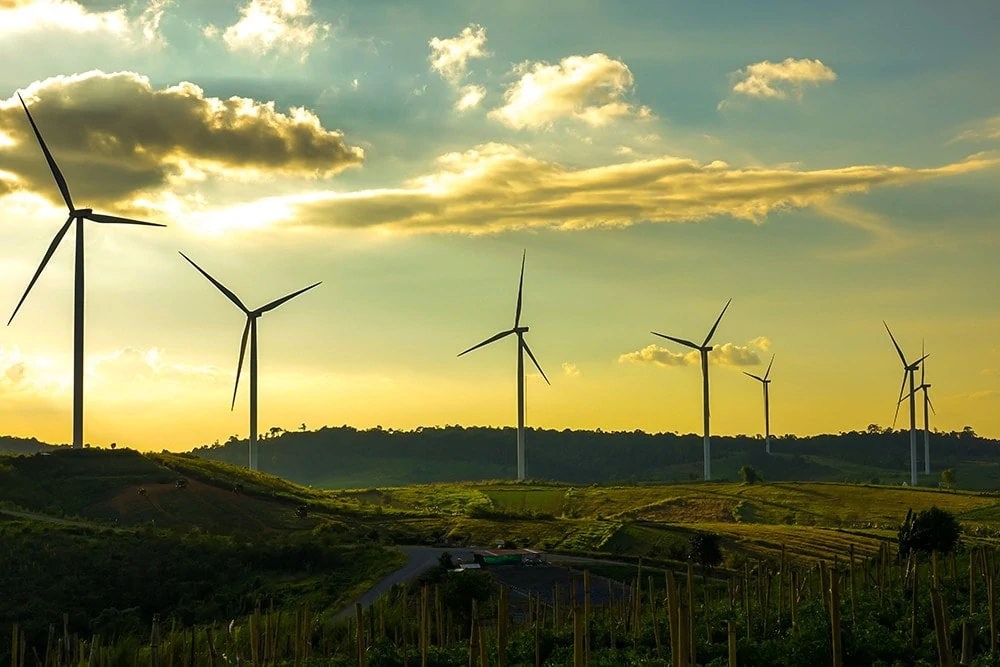By Miranda Carr head of equity research at Haitong International
Green finance has been a major investment trend in China since 2016, which saw the first major wave of green bonds issued. These amounted to US$ 36.2 billion, or 39 percent of the global total.
While some of these initial bonds were accused of simply using ‘greenwash’ to get low-cost funding, the market is now maturing into being much more diverse and genuinely environmentally-led, both in mainland China and for investment in the UK and Belt and Road markets.
China’s commitment to addressing its long-term environmental problems, including chronic air pollution, a coal-based power sector and low energy-efficiency, stepped up a gear under the new administration in 2012.
In tandem with the well-known capacity cuts for heavily-polluting industries, such as steel, coal and cement, and stricter waste treatment standards, in December 2015 the People’s Bank of China issued new regulations to encourage green investment through the bond markets.
Perks of these included lower Central Bank borrowing costs for banks and subsidised interest payments on green bonds. For the most environmentally friendly loans, the government subsidised up to 12 percent of the interest rate.
At the start, however, this simply led to a whole raft of green bond issuance from Chinese banks and local government investment vehicles, rather than from individual companies or projects; issuance from banks and local government investment vehicles accounted over two-thirds of the total in 2017.
Given the lack of transparency on the eventual end-use of proceeds by these financial institutions, critics raised questions about whether these funds were going to genuine environmental projects or just being issued to take advantage of the lower financing costs and higher asset allocations.
Greenwash accusations grew stronger, particularly as up until December 2018 clean coal technologies qualified as ‘green’ investments, despite being excluded under international standards.
The market is changing significantly, however, both in China and the UK. Last year, out of a total of US$ 44 billion of green bonds issued (up 35 percent from 2018), issuance from banks and other financials was just 36 percent of the total. Utilities accounted for 23 percent, transportation for 17 percent and other industrials/services companies accounted for the remainder.
This implies more funding is going straight to environmentally-friendly projects, such as rail construction and renewable energy, rather than being put in a general, but not necessarily transparent, ‘green’ investment pot.
This shift is in response to much tighter regulation on issuance from the People’s Bank of China on what actually qualifies as a green bond. From 2020, these requirements will be further strengthened with mandatory disclosures for all listed companies on environmental factors. As a result, greenwash should be much harder to slap on top of a plain vanilla issue and standards will be raised across the board.
Crucially for international markets and UK companies, this also applies to the small, but growing, issuance of green bonds for Belt and Road initiatives and investment in overseas assets.
In November 2018, the China Green Finance Committee and the City of London’s Green Finance Institute launched the green investment principles for the Belt and Road, which aim to establish clear low carbon and sustainability standards for infrastructure and related projects along the route. A total of 30 financial institutions have signed up.
In addition, the London Stock Exchange, which has a total of 200 green bonds, tightened up its green bond reporting requirements last year. Bonds issued by companies with revenues dominated by green activities will now have to submit annual, verified reports about how they actually use the proceeds.
We are still in early stages, however. There was much fanfare in 2018 about the Industrial and Commercial Bank of China’s issuance of US$ 1.6 billion of green bonds on the London Stock Exchange’s International Securities Market. It will invest in renewable energy, energy efficiency, low-carbon transportation, sustainable water and wastewater management.
An ideal project outlined in its prospectus was an investment in the 588 Megawatts Beatrice offshore wind farm in the Outer Moray Firth, which raised £2.6 billion of financing in total. In 2019 the Shanghai Pudong Development Bank issued US$ 300 million in green bonds.
There is a growing demand from European and Chinese investors for green assets to fulfil their Environmental, Social, and Governance (ESG) investment obligations. This, in combination with an improved regulation and reporting for green bonds, should result in preventing accusations of flagrant ‘greenwashing’. In turns, this should lead to another record year for green bond issuance.
With improved China-UK securities market co-operation, this puts new issuance for the Belt and Road and other infrastructure projects onto a stronger, and cleaner, footing.


